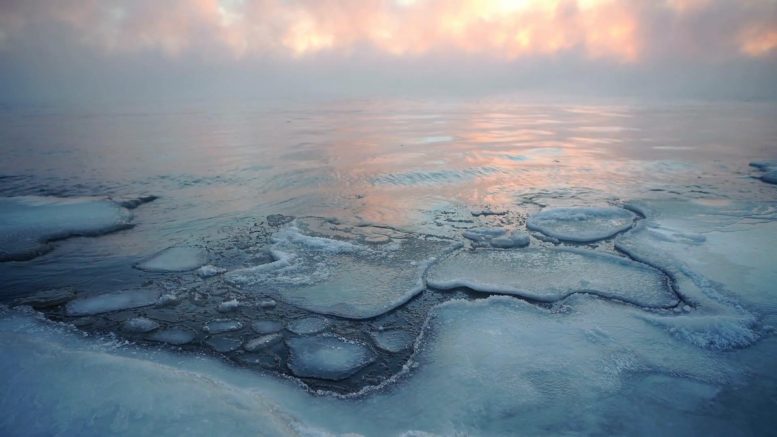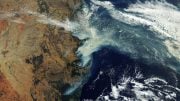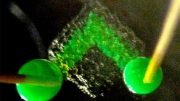
A University of Colorado Boulder study anticipates the Arctic experiencing ice-free summer days earlier than previously thought, possibly within the next few years. This could occur between the late 2020s and 2030s across all emission scenarios. The research highlights the critical need to lower emissions to mitigate the impact on Arctic wildlife, coastal communities, and the global climate, while also noting the resilience of Arctic sea ice to recover rapidly with reduced atmospheric CO2.
According to a recent study from the University of Colorado Boulder, the Arctic may experience summer days almost entirely free of sea ice within the next few years.
The findings, published in the journal Nature Reviews Earth & Environment, suggest that the first ice-free day in the Arctic could occur over 10 years earlier than previous projections, which focused on when the region would be ice-free for a month or more. The trend remains consistent under all future emission scenarios.
By mid-century, the Arctic is likely to see an entire month without floating ice during September, when the region’s sea ice coverage is at its minimum. At the end of the century, the ice-free season could last several months a year, depending on future emissions scenarios. For example, under a high-emissions, or business-as-usual, scenario, the planet’s northernmost region could become consistently ice-free even in some winter months.
Defining “Ice-Free” in the Arctic
For scientists, an ice-free Arctic doesn’t mean there would be zero ice in the water.
Instead, researchers say the Arctic is ice-free when the ocean has less than 1 million square kilometers (386,000 square miles) of ice. The threshold represents less than 20% of what the region’s seasonal minimum ice cover was in the 1980s. In recent years, the Arctic Ocean had around 3.3 million square kilometers of sea ice area at its minimum in September.
Alexandra Jahn, associate professor of atmospheric and oceanic sciences and fellow at CU Boulder’s Institute of Arctic and Alpine Research, set out to analyze existing literature on sea ice projections. She and her collaborators also analyzed sea ice coverage data from computational climate models to assess how the Arctic might change daily in the future.
They found that the first day when sea ice coverage dips below the 1-square-kilometer threshold would occur on average four years earlier than the monthly averages, but could occur up to 18 years earlier.
“When it comes to communicating what scientists expect to happen in the Arctic, it is important to predict when we might observe the first ice-free conditions in the Arctic, which will show up in the daily satellite data,” Jahn said.
Importance of Predicting Ice-Free Conditions
The team projected the Arctic Ocean could become ice-free for the first time on a late August or early September day between the 2020s to 2030s under all emissions scenarios.
Jahn said greenhouse gas emissions are the main contributors to sea ice loss. A decrease in snow and ice cover increases the amount of heat from sunlight absorbed by the ocean, exacerbating ice melt and warming in the Arctic.
Sea ice declines have significant impacts on Arctic animals that rely on sea ice for survival, including seals and polar bears. In addition, as the ocean warms up, researchers are concerned that non-native fish could move into the Arctic Ocean. The impact of these invasive species on local ecosystems remains unclear.
Sea ice loss also poses a risk to the communities living near the coastal region. Sea ice plays a significant role in buffering the impacts of ocean waves on the coastal land, Jahn said. As sea ice retreats, ocean waves would get bigger, causing coastal erosion.
While an ice-free Arctic is inevitable, Jahn said future emissions levels will still determine how often the conditions occur. Under an intermediate emissions scenario, a path the current society is on, the Arctic might become ice-free only during late summer and early fall from August to October. But under the highest emissions scenario, the Arctic could be ice-free for up to nine months by late this century.
“This would transform the Arctic into a completely different environment, from a white summer Arctic to a blue Arctic. So even if ice-free conditions are unavoidable, we still need to keep our emissions as low as possible to avoid prolonged ice-free conditions,” Jahn said.
The good news: Arctic sea ice is resilient and can return quickly if the atmosphere cools down.
“Unlike the ice sheet in Greenland that took thousands of years to build, even if we melt all the Arctic sea ice, if we can then figure out how to take CO2 back out of the atmosphere in the future to reverse warming, sea ice will come back within a decade,” Jahn said.
Reference: “Projections of an ice-free Arctic Ocean” by Alexandra Jahn, Marika M. Holland and Jennifer E. Kay, 5 March 2024, Nature Reviews Earth & Environment.
DOI: 10.1038/s43017-023-00515-9
This work was funded by the U.S. National Science Foundation, the Alexander von Humboldt Foundation, and NASA.









Everybody mark 2030 on your calendars. According to NASA, the annual minimum arctic sea ice has been similar for the past couple decades (svs.gsfc.nasa.gov). If the article authors at the University of Colorado at Boulder believe it will be less than a fifth of what it is now within six years, that in summers “the region would be ice-free for a month or more” I’m willing to take that bet.
I wondered why “The trend remains consistent under all future emission scenarios.”, which variables persuaded the study authors to this conclusion. From the study, “Although CO2 emissions were the most impactful drivers, the radiative effects of chlorofluorocarbons account for about 48% of forced September sea ice loss from 1979–2005”. Both CFCs (48%) and CO2 (over 48%) are emissions. I haven’t read the study in depth, but as the article argues “The research highlights the critical need to lower emissions” while saying emissions are “consistently” irrelevant to the trend, that contradiction is enough for me to discount the article entirely.
“…, while also noting the resilience of Arctic sea ice to recover rapidly with reduced atmospheric CO2.”
Where is the evidence to support this assertion? During the 2020 COVID shutdowns, monthly-average anthropogenic CO2 emission declined 14-18% in April, for an average annual decline of 6-10%. Yet, when the monthly CO2 concentrations are plotted to reveal the seasonal changes, there is no obvious difference in the slope of the Fall-Spring ramp-up phase, nor the annual northern hemisphere maximum in May, compared to 2019 and 2021.
https://wattsupwiththat.com/2021/06/11/contribution-of-anthropogenic-co2-emissions-to-changes-in-atmospheric-concentrations/
https://wattsupwiththat.com/2022/03/22/anthropogenic-co2-and-the-expected-results-from-eliminating-it/
From the abstract of the journal article, “…, with SIA [Sea Ice Area] declining by −0.078 million km2 year−1 between 1979 and 2023”; why use millions when thousands will suffice? Where are the ‘error bars’ or uncertainty ranges in the stated values? The two significant figures used suggests that the area is only known to a precision of +/-500 km2, but it may be a larger uncertainty. It has been said that mathematics is the language of science. All too frequently, climatologists take a cavalier attitude towards the numbers that they present. It is equivalent to using slang or colloquialisms.
From the article, “For instance, replacing sea ice cover with open water modifies the radiation balance via reductions in albedo, in turn, accelerating and amplifying anthropogenic warming, especially in the Arctic.”
As the lede illustration shows, sun glint, or specular reflection off water, can be much brighter than the diffuse reflection from snow. Indeed, glancing sun rays can reach 100% reflectance. However, the Arctic is notorious for low cloud-cover, which forced the Vikings to invent the Sunstone to navigate by locating the sun behind clouds. Therefore, clouds are important in determining albedo, perhaps more than snow and water. Because the sun is below the horizon in the Winter, comparisons should be made for changes in Summer reflectance, not averages, or normal incidences. In any event, the impact of decreasing snow/ice is exaggerated.
https://wattsupwiththat.com/2016/09/12/why-albedo-is-the-wrong-measure-of-reflectivity-for-modeling-climate/
Figure 2 in the article is misleading. It shows the sun directly overhead, which never happens in the Arctic. It only implicitly shows specular reflection, and erroneously shows it as being negligible. They show ‘normal’ reflection (perpendicular to the surface) which is a physically unrealizable geometry above the Arctic Circle.
The authors should spend less time with their computer programs, and more time understanding the physics of reflection and the geometry of sun-Earth alignments.
It’s all about CO2 emissions, but these doom propagandists ignore natural influences of greenhouse gas introduction into the atmosphere. No mention of the HUGE quantity of water vapor directly injected into the stratosphere by the Hunga Tonga volcanic eruption January 2022 that reportedly increased the water vapor content of the entire stratosphere by 10%. If that does not effect the climate, nothing will.
What? Again?
The next prediction by the Climate Cult that actually comes true… will be the first.
They have, yet again, proven only one thing…
Conjecture and opinions are NOT scientific facts nor valid points on data sheets.
The ice may melt off completely… in 4-5 billion years.
I’m going to put a reminder in my phone.
Ever see the movie Bee Movie? There’s a scene where the main character (a bee) is inside when someone shuts the window. He can’t see it, so he keeps trying to fly through the glass, not understanding what’s going on. “This time. THIS time. THIS TIME. THISTIME THISTIME THISTIME!” And bouncing off every time, of course.
“This time” the prediction really will come true, dangit! THIS time! THIS TIME!
In the bee’s defense, he stopped trying a LOT sooner than the people who make these predictions.
More honest prediction: “In 8 years, we’ll make another doomsday prediction for 10 years from then.”
Hope your suffering is short, I think about that commercial that states, if you were to put a frog in boiling water it would jump right out but if you were to put a frog in cool water and slowly heat the water the frog would boil itself to death, what a comparison of humans on earth.